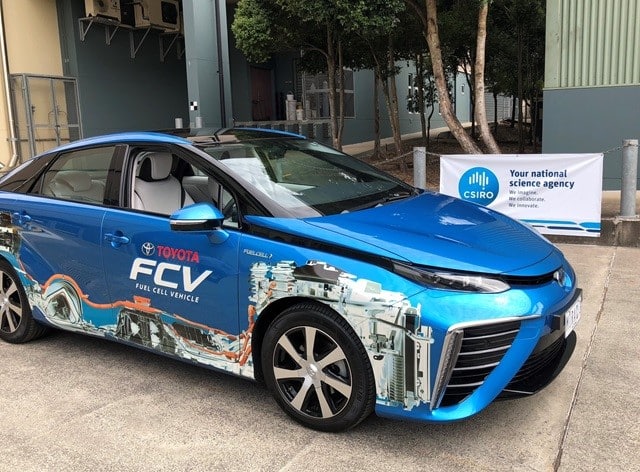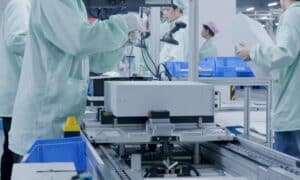Two hydrogen powered cars using ultra-high purity hydrogen were tested in Queensland yesterday with impressive results.
The hydrogen fuel was produced using CSIRO’s breakthrough membrane technology.
The technology makes it safer to transport hydrogen as well as cheaper. The process generates zero carbon emissions.
Toyota spokesperson Matthew Macleod told ABC News the membrane was a “game changer” that could extend hydrogen fuel cell technology to new markets overseas.

CSIRO Chief Executive Larry Marshall was one of the first to ride in the Toyota and Hyundai vehicles, describing it as a “watershed moment for energy”.
Ammonia key to exporting hydrogen
Because hydrogen is highly flammable and has a low density, it has been difficult to ship safely until now.
The plan is to extract hydrogen from water using wind or solar power, then convert it into ammonia.
Once it reaches its destination the special CSIRO membrane converts it back into hydrogen cheaply and easily.
Hydrogen powered cars have numerous advantages
As well as being carbon-free, hydrogen can provide other advantages.
For example, while hydrogen costs more than petrol at this stage, hydrogen-run vehicles have twice the efficiency of those run on traditional fuels. This means that as the price of hydrogen falls, it will provide a lower-cost fuel option for cars.
When it comes to electricity generation, hydrogen has potential for use in energy storage for stabilising the grid. As more households and businesses invest in solar installations and sell excess power generated back the grid, over-servicing the grid with clean energy could become a problem.
Hydrogen could help mitigate this through its potential for use in solar energy storage. By using stored hydrogen to drive a generator, networks could cheaply meet peak demand for power.
Wind and solar could power hydrogen plants
Hydrogen production could be driven by wind and solar power. This gives Australia a major advantage over other countries without abundant renewable energy.
The CSIRO has been investing heavily in hydrogen fuel research for years, due to its vast potential to offset carbon and provide huge opportunities for Australia.
Meanwhile, the membrane technology breakthrough could open up huge markets for the fuel in Asia, such as South Korea and Japan, where mass production of hydrogen-powered vehicles is underway.












































